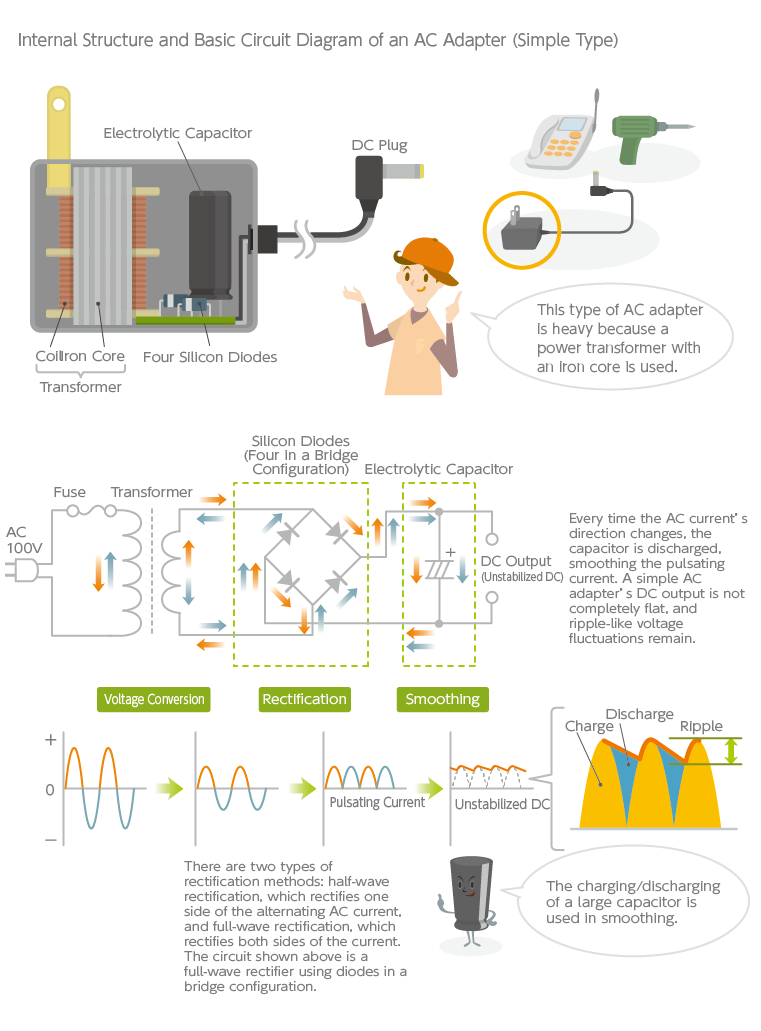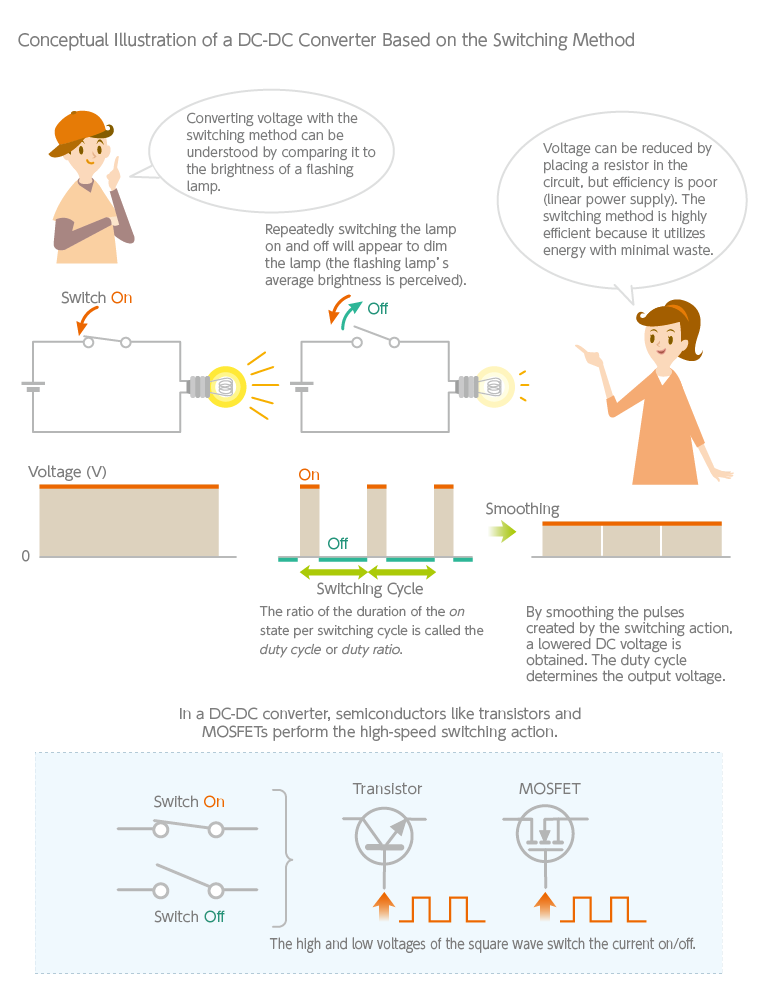The World of Power Electronics
Part 1: Power Electronics is a Key Technology in Environmental and Energy Problems

Why is power electronics drawing attention now?
Our perpetually humming, modern society is sustained by electrical power at the very foundation. Power electronics is a technical field related to the transmission, conversion, control, and supply of electrical power, as well as the supply of power to electronic devices. Electrical power consumption has been on the rise in recent years, despite the calls for energy conservation. The rapid proliferation of IT devices is aggravating this trend considerably. Against this background, power electronics is drawing renewed attention today as one of the key technologies for alleviating environmental and energy problems. This article begins a series covering the world of power electronics—a technology that is not well known outside of specialist engineers.
Without a supply of power, TVs and computers will not work, air conditioners and refrigerators will not run, and mobile phones will not be charged. Today’s electronic society can be regarded as one gigantic electronic device. Merely “supplying power” is inadequate—it is critical to sustain quality and eliminate destabilizing factors while pursuing economy (energy and resource conservation, high efficiency, etc.) and utility (small and lightweight, rich functionality, etc.). This is a constant technical challenge in power electronics.
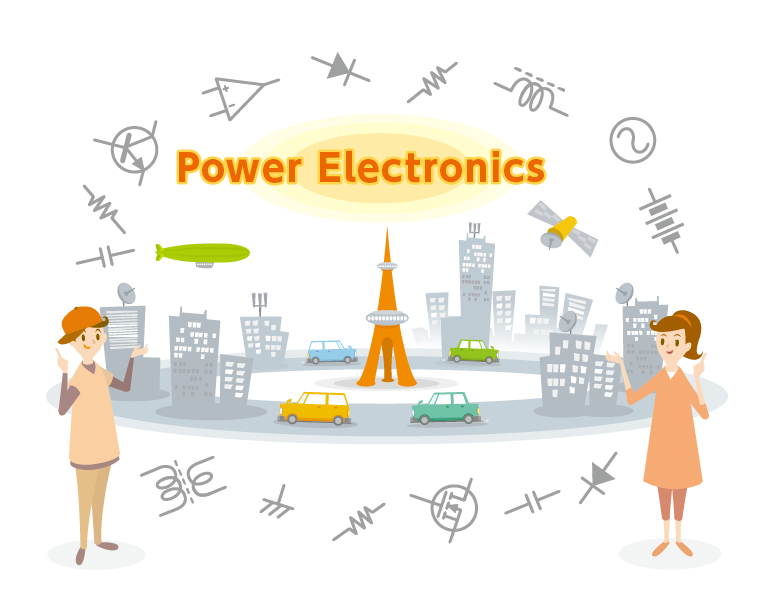
The first step in power electronics is to understand DC and AC
The first step in the world of power electronics is learning the difference between direct current (DC) and alternating current (AC). Primary batteries such as dry cell batteries and button batteries; rechargeable secondary batteries such as nickel-cadmium batteries, lithium-ion batteries and lead-acid car batteries; power generation by solar cells and fuel cells—all provide DC current. AC current, on the other hand, changes direction and intensity alternately at regular intervals. In Japan, the electricity available from household wall outlets is 100V (at a frequency of 50Hz in the eastern half of the country and 60Hz in the western half), 120V in North America, and 200 to 240V in the rest of the world. Commercial AC can be designated as 100V, but the voltage may fluctuate regularly by as much as 10V below or above 100V; occasionally, abnormal voltage fluctuations, instantaneous power outages and distortions of what should be a sine waveform do occur.
Even the DC current of batteries is not constant, as voltage drops over time. In portable devices like mobile phones and notebook computers, voltage drops can cause malfunctions, so they are usually equipped with automatic shutdown functions. Additionally, the DC current flowing through an electronic circuit can be infiltrated with elements of AC current, which can also cause malfunctions and radiate noise. Perfect forms of DC and AC may exist as theoretical models, but not in reality.
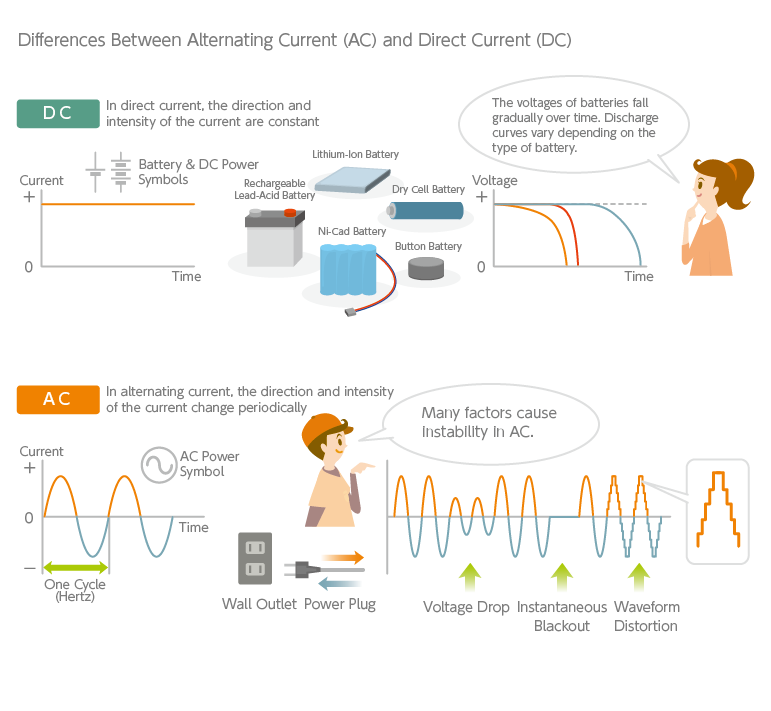
The role of power electronics in the delivery of electrical power
Power electronics bears the mission of minimizing losses and maximizing efficiencies in the transmission and conversion of electrical power. For example, the power generated at power plants is stepped up to high-voltage AC and distributed through transmission lines, but a large proportion of the energy is lost as heat due to the electrical resistance in the lines. This power loss is proportional to the square of the current. The higher the voltage, the smaller the current required to transmit the same amount of power—which is why transmission is conducted at very high voltages ranging from several hundred thousand to over a million volts. At lower voltages, the lines would need to be thicker, requiring more robust towers.
At the end of the 19th century, a controversy known as the “war of the currents” erupted in Europe and the United States over whether DC or AC was more suitable for building power transmission grids to serve broad areas. Voltage drops as transmission distances get longer, but the voltage of DC cannot be raised with a transformer—thus AC prevailed, and has been used to this day. However, in the second half of the 20th century, DC power transmission came to be reconsidered because DC is free from power loss issues inherent to AC. Overall, DC is more economical than AC for long-distance transmission, even though facilities are required to convert AC to DC before transmission and vice-versa at the other end. DC and AC both have their pros and cons, which is why they need to be mixed and matched appropriately. This is also true for electronic devices.
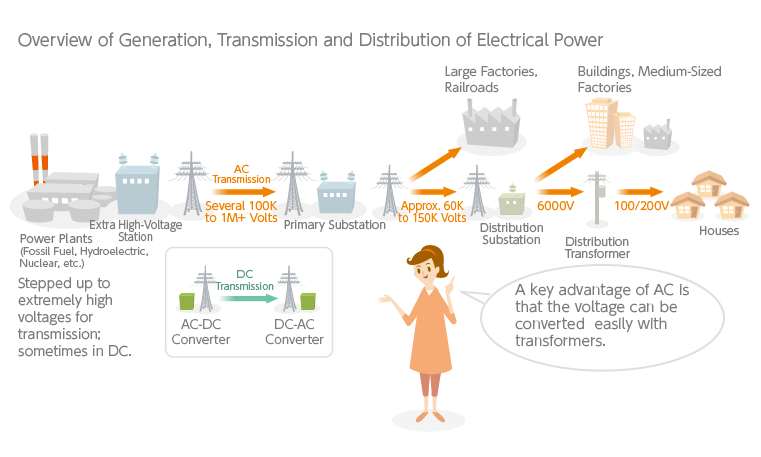
Power conversion in electronic devices
Most electronic devices are equipped with integrated circuits (ICs). Since ICs are driven by DC, devices that source power from commercial AC need circuitry to first convert it to DC. This is known as an AC-DC power supply (since the switching method is now mainstream, it is sometimes called an AC-DC switching power supply or simply a switching power supply). Mobile phones, which are battery-powered, use an AC adapter—which is a simple AC-DC power supply—to convert AC to DC to charge the battery. Notebook computers commonly use AC adapters during fixed use, as they consume far more power than mobile phones.
AC-DC power supplies are not the only source of power. Since electronic circuits often require different voltages, power needs to be converted to the appropriate voltages. This is made possible by DC-DC converters. As electronic devices grow more multifunctional, small DC-DC converters are being placed near ICs in a distributed fashion. In the past, the cold cathode tubes that provided the backlight in LCD TVs required high voltages to illuminate. They were equipped with DC-AC inverters (sometimes simply called inverters) that converted the DC back to AC again so that transformers can be used to step up the voltages.
As you can see, various types of power supplies are used in electronic devices to meet the requirements of each circuit. They come in a variety of forms, such as those enclosed in cases, modules that aggregate multiple power circuits, boards that are built into devices, and small sub-boards that are mounted on other circuit boards. Though not well-known outside of specialists, the world of power supplies is a technically intriguing one.
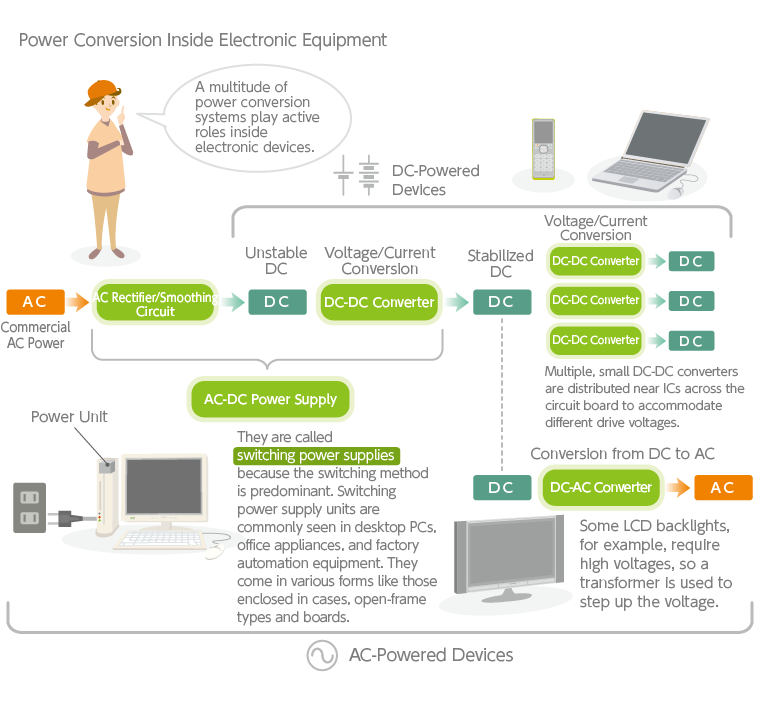
TDK is a comprehensive electronic components manufacturer leading the world in magnetic technology



